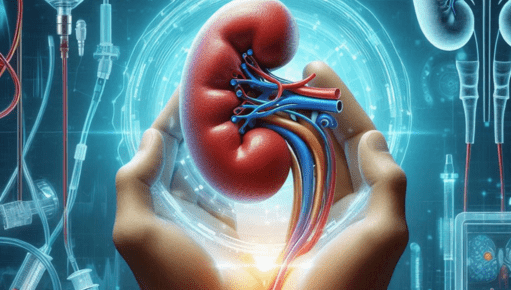
Understanding Peritoneal Dialysis: A Lifesaving Treatment for Kidney Failure
Peritoneal Dialysis (PD) is a medical procedure used to treat people whose kidneys are no longer able to filter waste, fluids, and toxins from the blood effectively. This treatment serves as an alternative to hemodialysis, offering patients a way to manage their kidney failure and maintain a good quality of life. In this article, we will explore what peritoneal dialysis is, how it works, its benefits, risks, and much more.
What is Peritoneal Dialysis?
Peritoneal dialysis is a type of dialysis that uses the lining of your abdomen, called the peritoneum, as a natural filter to remove waste products and excess fluids from the body. Peritoneal Dialysis The procedure involves introducing a special fluid (dialysate) into the abdominal cavity through a catheter. The waste and excess fluid from the bloodstream move into the dialysate, which is then drained from the body.
Unlike hemodialysis, which requires a machine to filter blood outside the body, peritoneal dialysis is typically done at home, giving patients more flexibility and independence.
How Does Peritoneal Dialysis Work?
The process begins with the insertion of a catheter into the patient’s abdomen, a minor surgical procedure typically performed by a doctor. Once the catheter is in place, the dialysis fluid is infused into the abdominal cavity. This fluid stays there for a set amount of time, allowing waste and excess fluids to pass from the blood vessels in the peritoneum into the fluid.
After this dwell time, the used fluid is drained from the abdomen and replaced with fresh dialysate. This process is repeated multiple times during the day or night, depending on the specific type of dialysis regimen the patient follows.
Types of Peritoneal Dialysis
There are two main types of peritoneal dialysis: Continuous Ambulatory Peritoneal Dialysis (CAPD) and Automated Peritoneal Dialysis (APD).
- Continuous Ambulatory Peritoneal Dialysis (CAPD):
CAPD is a manual process where the patient manually exchanges the dialysate every few hours throughout the day. The process does not require a machine, and it allows the patient to maintain a normal routine. However, it requires a commitment to perform exchanges consistently, typically four times a day. - Automated Peritoneal Dialysis (APD):
APD, on the other hand, uses a machine known as a cycler to perform the exchanges. The machine automatically fills and drains the dialysate from the peritoneal cavity, usually during the night while the patient sleeps. This option allows for fewer manual exchanges and more convenience for patients.
Benefits of Peritoneal Dialysis
Peritoneal Dialysis offers several advantages over other types of dialysis, particularly for patients with certain lifestyles or medical conditions.
- Flexibility and Independence: Unlike hemodialysis, which often requires visits to a dialysis center multiple times a week, peritoneal dialysis can be performed at home. This provides greater flexibility in terms of when and where treatment is done.
- Continuous Treatment: Peritoneal dialysis is continuous, meaning it is done more frequently than hemodialysis, which is typically done three times a week. This helps the body maintain a more stable fluid and waste balance.
- Less Dietary Restrictions: Because PD is a continuous process, patients often experience fewer dietary restrictions compared to those on hemodialysis. The more stable fluid balance helps them manage their diet better.
- Better Preservation of Residual Kidney Function: Since the procedure involves natural filtration through the peritoneum, it can help preserve any remaining kidney function for a longer period than hemodialysis.
Risks and Complications
While Peritoneal Dialysis offers significant benefits, there are some risks and potential complications associated with the procedure. These include:
- Peritonitis: One of the most serious complications of PD is peritonitis, which is an infection of the peritoneum. It can occur if bacteria enter the peritoneal cavity through the catheter. Symptoms of peritonitis include abdominal pain, fever, and cloudy dialysis fluid.
- Hernias: The presence of a catheter in the abdomen can increase the risk of hernias, as the pressure inside the abdomen can cause weakness in the abdominal wall.
- Catheter Problems: Over time, the catheter used for dialysis may become blocked, kinked, or infected. Regular maintenance and proper hygiene can help reduce these risks.
- Fluid Overload: If too much dialysate is used or if it is not drained properly, patients may experience fluid overload, leading to swelling and other complications.
Who Is Suitable for Peritoneal Dialysis?
Not every patient with kidney failure is a candidate for Peritoneal Dialysis. Doctors consider several factors, including the patient’s overall health, lifestyle, and the presence of any other medical conditions.
In general, PD is a good option for:
- Patients who prefer a home-based dialysis treatment.
- Those who want to avoid the need for frequent trips to a dialysis center.
- People who have sufficient abdominal space for the dialysate and can manage the treatment at home.
However, patients with severe abdominal scarring, certain types of infections, or other medical conditions that affect the peritoneum may not be suitable candidates for peritoneal dialysis.
How to Prepare for Peritoneal Dialysis
Before starting Peritoneal Dialysis, patients need to undergo a comprehensive evaluation by a healthcare team. This evaluation includes assessing the patient’s overall health, their ability to manage the procedure at home, and whether they have enough healthy peritoneal tissue for filtration.
Patients are also taught how to care for the catheter, perform the exchanges, and recognize the signs of infection. Proper hygiene and maintenance of the catheter are critical to the success of the treatment and reducing the risk of complications.
Is Peritoneal Dialysis Right for You?
The decision to undergo Dialysis depends on your unique situation. Your doctor will discuss all available options with you, considering factors such as your health, lifestyle preferences, and the condition of your kidneys. It’s essential to work closely with your healthcare team to choose the best treatment plan for you.
Conclusion
Peritoneal dialysis is a viable treatment option for those with kidney failure, offering flexibility, independence, and fewer dietary restrictions. Although it comes with certain risks, proper care and management can help reduce complications. If you or a loved one is considering peritoneal dialysis, it’s important to consult with your doctor to determine if it is the right option for you.
